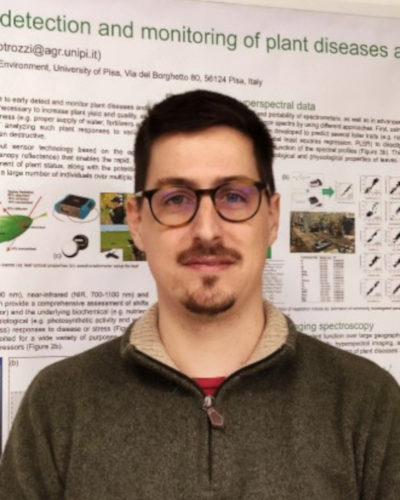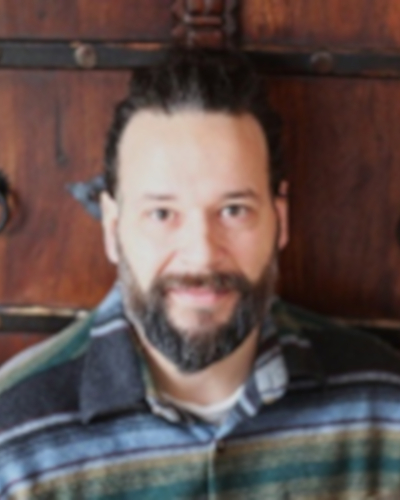SPECIAL SESSION #13
Optical sensors in Plant Pathology
ORGANIZED BY
Lorenzo Cotrozzi
Department of Agriculture, Food and Environment, University of Pisa, Italy
Sergio Cogliati
Department of Earth and Environmental Sciences, University of University of Milano-Bicocca, Italy
John J Couture
Departments of Entomology, and Forestry and Natural Resources, Purdue University, IN USA
René HJ Heim
Institute of Sugar Beet Research, University of Goettingen, Germany
Catello Pane
Council for Agricultural Research and Economics (CREA), Research Centre for Vegetable and Ornamental Crops
ABSTRACT
Plant disease and stress detection and monitoring represents a crucial challenge for research and practical applications. Standard field mensuration (e.g., visual assessment by human raters) can be logistically challenging, time-consuming, expensive, and error prone. Biotic and abiotic plant stress detection, as well as plant protection, need new and innovative techniques to address forthcoming challenges and trends in agricultural and forest production and management that require more precision than ever before. Within this context, optical sensors - intrinsically tied to efficient data analysis approaches - have shown an enormous potential to provide new insights into plant-stress interactions and for the (early) assessment of plant health status. The present special session aims to provide an overview in the use of optical sensors (e.g., RGB, multi/hyperspectral, thermal, fluorescence and LIDAR) in Plant Pathology, from the single cell to the ecosystem level.
ABOUT THE ORGANIZERS
Dr. Lorenzo Cotrozzi is a Senior Researcher in the Plant Pathology Lab at the Department of Agriculture, Food and Environment of the University of Pisa, Italy. His major research interests include advancing vegetation spectroscopy and the concept of hyperspectral phenotyping of plant stress, and the ecophysiological and biochemical responses of plants to oxidative stress induced by biotic/abiotic factors. He has largely used hyperspectral sensors (mostly at leaf level) on stressed crop and forest species, both in Italy and USA (e.g., Wisconsin, Indiana).
Dr. Sergio Cogliati is a Senior Researcher in the Remote Sensing of Environmental Dynamics Lab at the Department of Earth and Environmental Sciences, University of the University of Milano-Bicocca, Italy. His major research interests include the development of new high spectral resolution instruments for field, UAV and airborne remote sensing (e.g., RGB, multi/hyperspectral, thermal, fluorescence and LIDAR). Since 2011, he participates in the development of the European Space Agency (ESA) Fluorescence EXplorer (FLEX) mission.
Prof. John J Couture leads the Plant-Insect Chemical Ecology Lab at the Departments of Entomology and Forestry and Natural Resources of Purdue University, IN USA. His major research interests include examining the influence of environmental change on plant and insect ecology, advancing the ability of hyperspectral data to characterize plant chemical and metabolic profiles, and utilizing spectroscopy to improve agriculture and forestry management. He combines analytical chemistry, hyperspectral and remote sensing technology, field-based measurements, manipulative experiments, and statistical modeling.
Dr. René HJ Heim is a Postdoctoral Researcher in the Remote Sensing of Plant Stress Lab at the Institute of Sugar Beet Research, an associate institute with the University of Goettingen, Germany. His major research interests include, optical remote sensing, abiotic/biotic plant stress, plant functional ecology and unmanned aerial systems. During multiple international (e.g., Australia, USA, Belgium) research periods, he used optical sensors (mostly spectroscopy) across all scales (i.e., satellites, UAVs, and close-range).
Dr. Catello Pane is a Senior Researcher at the Research Centre for Vegetable and Ornamental Crops of the Council for Agricultural Research and Economics (CREA) in Pontecagnano Faiano, Italy. His major research interests include the development and implementation of low environmental impact cultivation methods, the promotion of sustainable agricultural techniques and the technological innovation mostly to improve resource efficiency in plant disease management. In recent years, he has carried out studies on the application of hyperspectral and thermal imaging on crops for the early detection of fungal infections.


















